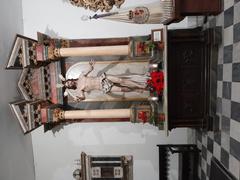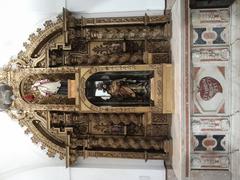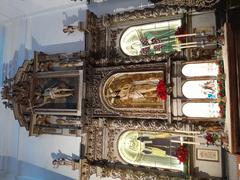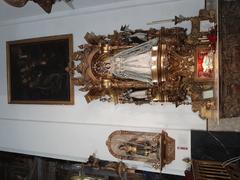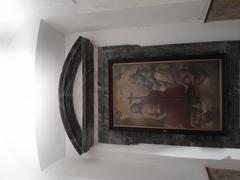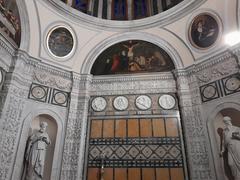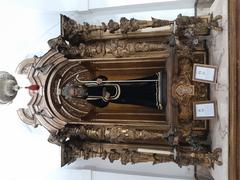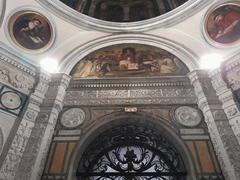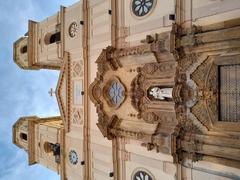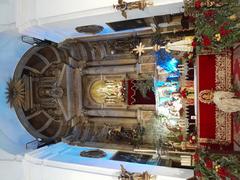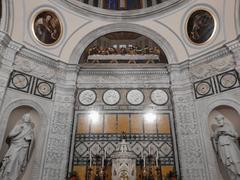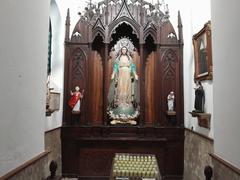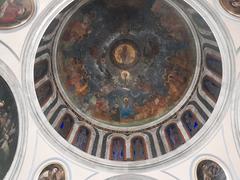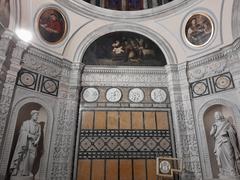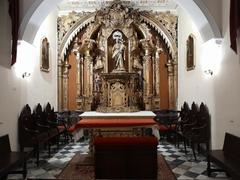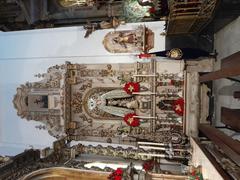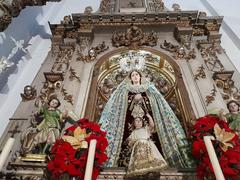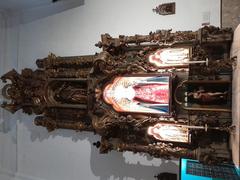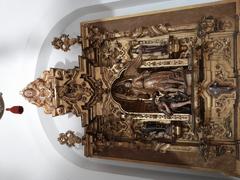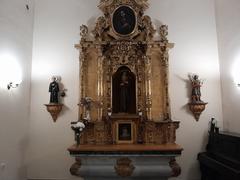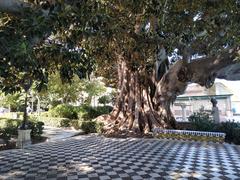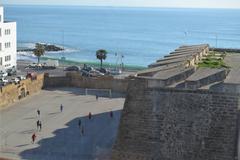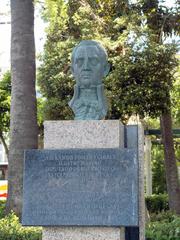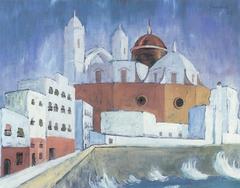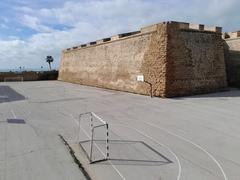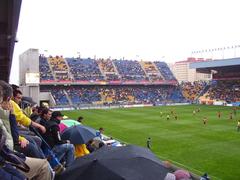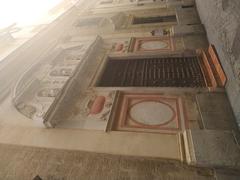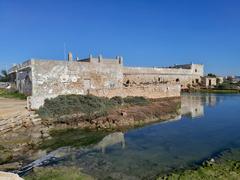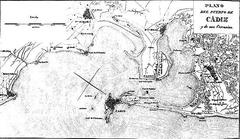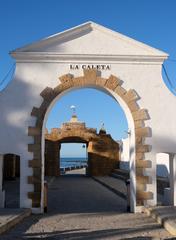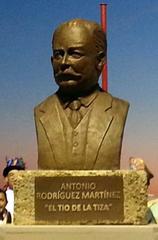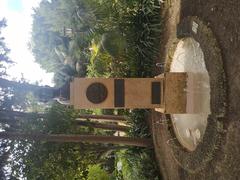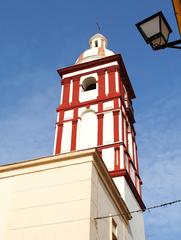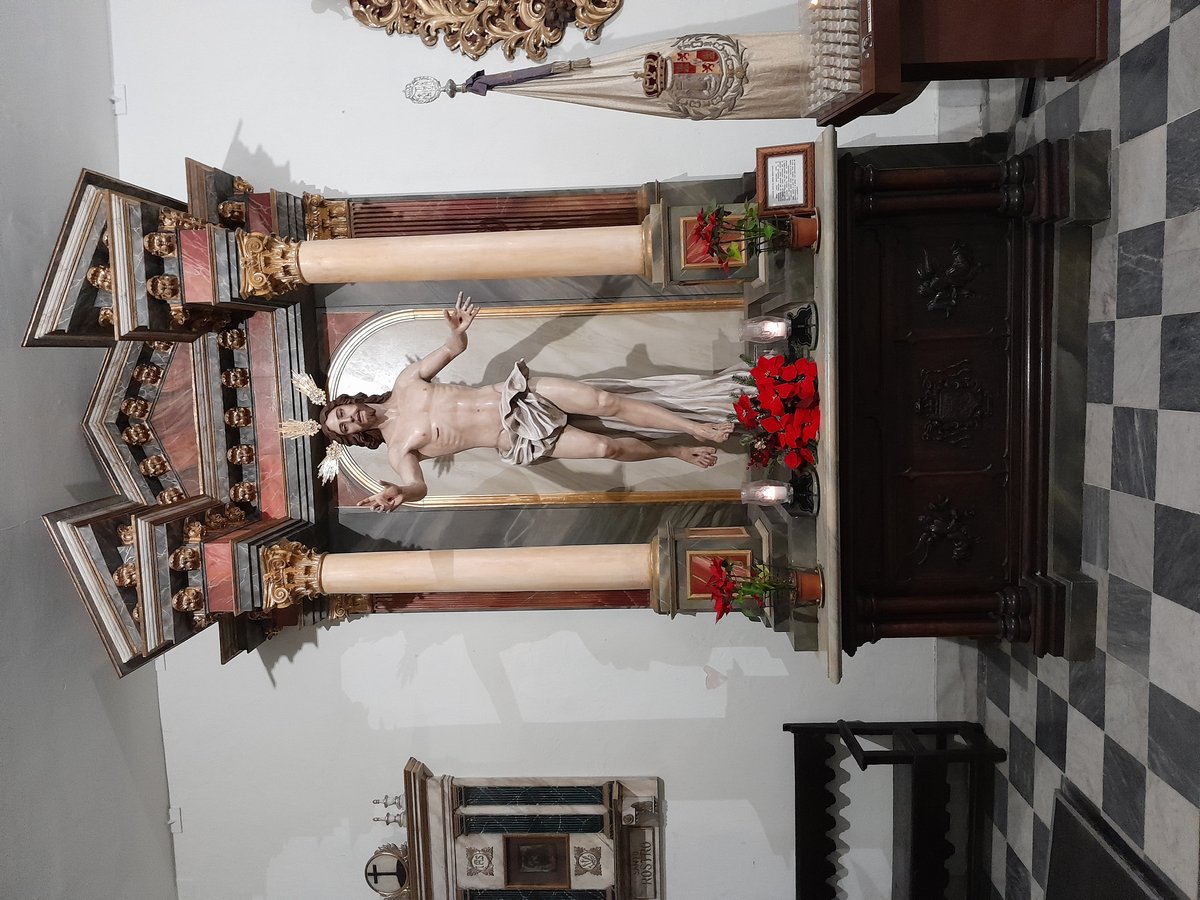
Iglesia de San Antonio Cádiz: Visiting Hours, Tickets, and Travel Guide
Date: 14/06/2025
Introduction
Nestled in the historic heart of Cádiz, Spain, the Iglesia de San Antonio de Padua stands as a captivating symbol of religious heritage, architectural beauty, and community life. Dating to the 17th century, this church has witnessed Cádiz’s transformation from a bustling Atlantic port to a vibrant modern city, serving both as a spiritual center and a repository of art and culture. Whether you are drawn by its history, architectural grandeur, or the lively atmosphere of its surrounding plaza, the Iglesia de San Antonio is an essential stop for any visitor to Cádiz. This comprehensive guide covers visiting hours, ticketing, accessibility, travel tips, and nearby attractions to help you plan a memorable visit (Parroquia de San Antonio de Padua - Cádiz; Turismo Cádiz - Iglesia de San Antonio).
Historical Overview and Architectural Highlights
Foundation and Early Development
Founded in 1669 in the then-outskirts of Cádiz, the Iglesia de San Antonio was established during a period of both urban expansion and growing religious devotion. Built on land known as “Campo de la Jara,” the church was dedicated to Saint Anthony of Padua, a beloved Franciscan preacher and miracle worker. Over the centuries, it has played a prominent role in Cádiz’s spiritual and civic life, serving as both a sanctuary in turbulent times and a gathering place for celebrations (Parroquia de San Antonio de Padua - Cádiz).
Architectural Features
Exterior:
The church’s façade is a harmonious blend of Baroque and Neoclassical styles, featuring clean lines and restrained ornamentation. The most distinctive elements are its twin towers, added in the 19th century, which flank a richly decorated entrance with Corinthian and Solomonic columns. Above the main portal, a marble statue of San Antonio stands in a prominent niche (andalucia.com).
Interior:
Inside, the church follows a Latin cross plan with three naves separated by pilasters. The main nave boasts a barrel-vaulted ceiling with lunettes, and the crossing is topped by a dome with a lantern that fills the sanctuary with natural light. The 19th-century main altarpiece, crafted by Manuel García del Álamo, is a polychrome wooden structure imitating marble and houses statues of the Virgin of Patrocinio, Saint Anthony, and Saint Francis of Paola. Many of these sculptures are attributed to Pedro Roldán, a prominent Baroque artist (guiadecadiz.com).
Other highlights include side chapels for private reflection, a collection of religious paintings and liturgical objects, and the Chapel of the Blessed Sacrament, a tranquil space for Eucharistic adoration.
Visiting Information
Location and Access
- Address: C. Cervantes, 35, 11003 Cádiz, Spain
- Setting: The church faces the lively Plaza de San Antonio, a major urban hub surrounded by historic buildings and within easy walking distance of many city attractions (visitingcadiz.com).
Getting There
- On foot: Easily accessible from anywhere in Cádiz’s historic center.
- By car: Underground parking is available beneath Plaza de San Antonio, but spaces are small and can fill quickly (visitingcadiz.com).
- Public transport: Local buses and taxis stop nearby.
Visiting Hours
- Monday to Saturday: 10:00 AM – 1:00 PM and 5:00 PM – 7:00 PM
- Sunday and Public Holidays: 11:00 AM – 1:30 PM
These hours may vary during religious festivals or special events. Always check the official parish website or local tourism resources before your visit (Horarios Misa - Parroquia de San Antonio; horariomisas.es).
Tickets and Entry
- Admission: Free. No ticket required.
- Donations: Welcomed to support conservation and community programs.
- Guided Tours: Occasionally offered, especially during festivals or by arrangement with the parish office.
Accessibility
- Wheelchair Access: The main entrance features a ramp; assistance is available on request.
- Facilities: Accessible restrooms.
- Note: Some areas may have minor limitations due to the church’s historic nature.
Visitor Experience
Atmosphere
The church exudes a serene and contemplative ambiance. Visitors are welcome to explore outside of service times, admire the architecture and art, or attend Mass. Please be respectful of worshippers, especially during liturgical celebrations.
Dress Code and Etiquette
- Modest attire: Shoulders and knees covered; hats removed indoors.
- Photography: Permitted outside of services; avoid flash and tripods. During Mass, refrain from taking photos or moving around.
- Quiet: Maintain a respectful silence, especially during prayer or religious events.
What to See and Do
- Admire the façade and towers: The twin towers and the Baroque entrance are highlights for architecture enthusiasts.
- Explore the interior: The main altarpiece, dome, and side chapels are must-sees.
- Attend Mass or events: Experience local religious traditions, especially during the feast of Saint Anthony on June 13.
- Join a guided tour: Learn about the church’s history, art, and role in Cádiz’s community.
Nearby Attractions
- Plaza de San Antonio: The main square, perfect for people-watching and soaking in the local atmosphere.
- Cádiz Cathedral: A short walk east, famed for its Baroque and Neoclassical design.
- Museum of Cádiz: Offers archaeological and art collections.
- Gadir Archaeological Site: Explore Phoenician ruins just a few streets away (andalusien360.de).
- Provincial Library, Casino Gaditano, Casa de Pemán: All located on or near the plaza, these offer additional cultural experiences.
Plaza de San Antonio: Urban and Historical Context
Originally known as “Campo de la Jara,” Plaza de San Antonio has played a pivotal role in Cádiz’s history, hosting events like the proclamation of the Spanish Constitution of 1812 (“La Pepa”) and various political gatherings (es.wikipedia.org). Its open, geometric design, elegant facades, and vibrant social life make it a central point for festivals, public concerts, and daily gatherings. The square is lined with historic buildings and offers easy access to cafés, restaurants, and shops.
Frequently Asked Questions (FAQ)
Q: What are the Iglesia de San Antonio’s opening hours?
A: Monday to Saturday: 10:00 AM – 1:00 PM and 5:00 PM – 7:00 PM; Sundays and public holidays: 11:00 AM – 1:30 PM.
Q: Is there an entrance fee?
A: No, entry is free. Donations are appreciated.
Q: Are guided tours available?
A: Occasionally, especially during festivals or by prior arrangement.
Q: Is the church accessible to people with reduced mobility?
A: Yes, via a ramp at the main entrance; accessible restrooms are also available.
Q: Can I attend Mass as a visitor?
A: Yes, visitors are welcome. Check the schedule online or at the church entrance.
Practical Tips for Visitors
- Best times to visit: Early mornings or late afternoons for a quieter experience; during festivals for vibrant local culture.
- Language: Most services are in Spanish; basic English is spoken by some staff.
- Photography: Respect guidelines and worshippers.
- Weather: The church is cool inside; bring a light sweater if needed.
- Safety: The area is safe and lively; standard precautions apply.
Enhance Your Experience
Download the Audiala app for guided audio tours and up-to-date listings of Mass times, events, and cultural highlights. Follow the parish and local tourism offices on social media for the latest news.
Visuals:
- High-quality images of the façade, interior, and art highlights.
- Interactive map and virtual tour links are available on the parish and tourism websites.
Summary
The Iglesia de San Antonio is not just a historical monument but a living center of faith, art, and community in Cádiz. Its 17th-century origins, evolving architecture, and vibrant parish life make it a rewarding destination for spiritual reflection, cultural enrichment, and architectural admiration. With free entry, accessible facilities, and a central location amid Cádiz’s historic attractions, it promises an enriching visit for every traveler. For the most current information, consult official parish or tourism websites, and consider digital tools like the Audiala app to enhance your journey (Parroquia de San Antonio de Padua - Cádiz; Horarios Misa - Parroquia de San Antonio; Turismo Cádiz - Iglesia de San Antonio).
Official Sources
- Parroquia de San Antonio de Padua - Cádiz
- Horarios Misa - Parroquia de San Antonio
- Turismo Cádiz - Iglesia de San Antonio
- Andalucía.com - Iglesia de San Antonio
- Visiting Cádiz - Plaza de San Antonio
- Andalusien360.de - Plaza de San Antonio, Cádiz
- Wikipedia - Plaza de San Antonio (Cádiz)
